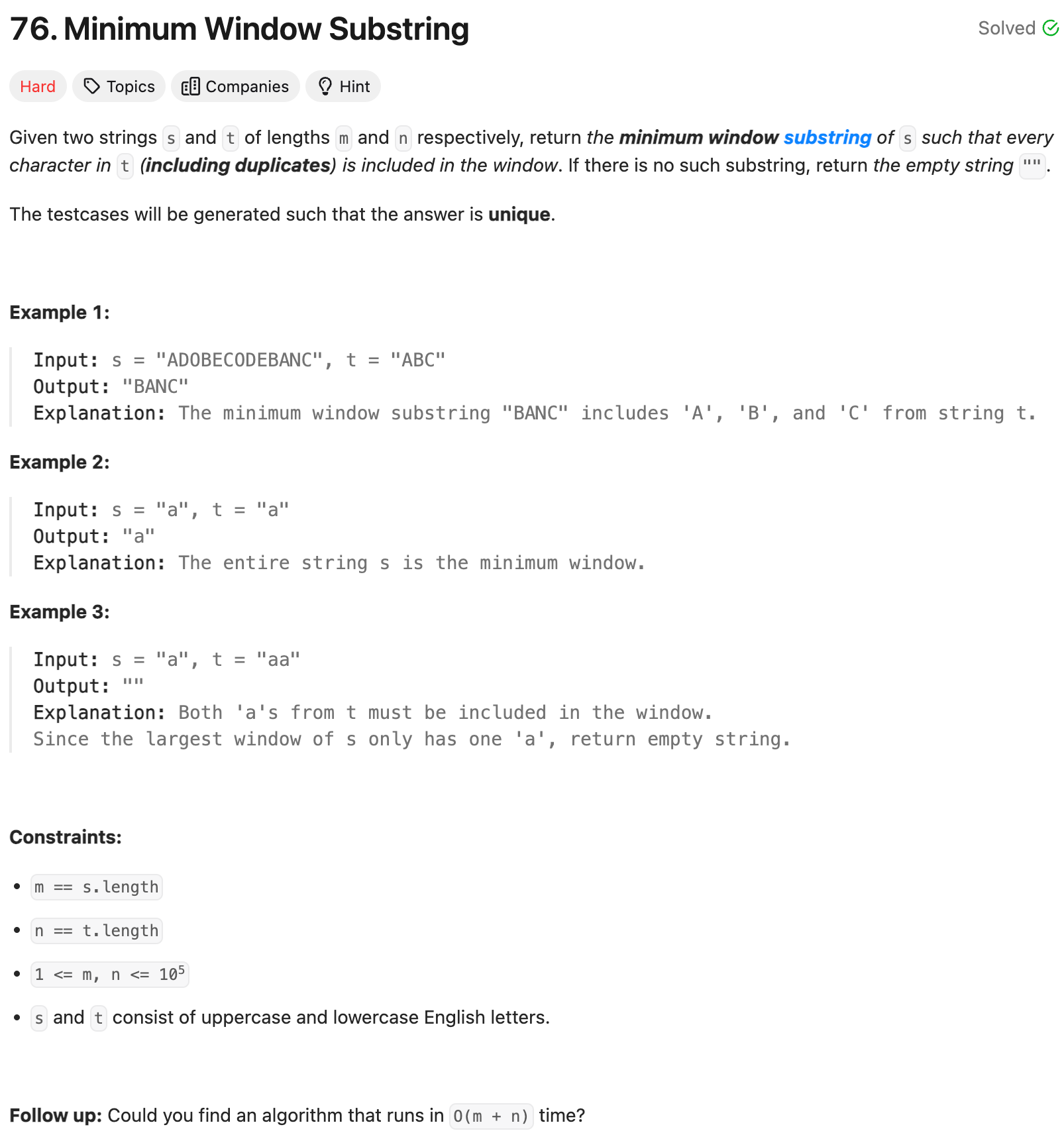Problem: Minimum Window Substring
Problem Statement

Intuition
The initial thoughts may involve using a sliding window approach to efficiently search for the minimum window.
Approach
The approach uses two pointers, start and end, to represent the window. It also maintains a frequency counter for characters in both strings s and t. As the window slides through the string s, the frequency counter is updated. The curr_chars set keeps track of the current characters in the window. The goal is to find the minimum window that contains all characters from t.
Complexity
-
Time complexity: O(m + n), where m is the length of string
t(pattern) and n is the length of strings(input). -
Space complexity:
- The space complexity is O(K), where K is the number of unique characters in string
t. - The
counter_tdictionary stores the frequency of each character int, which has a maximum of K unique characters. - The
curr_charsset and thecounterdictionary also have a maximum size of K.
- The space complexity is O(K), where K is the number of unique characters in string
Code
class Solution:
def minWindow(self, s: str, t: str) -> str:
counter_t = Counter(t)
num_of_unique_chars = len(set(t))
counter = Counter()
curr_chars = set()
max_length = float('inf')
res = ''
N = len(s)
start = 0
for end, c in enumerate(s):
counter[c] += 1
if c in counter_t and counter[c] >= counter_t[c]:
curr_chars.add(c)
while start <= end and len(curr_chars) == num_of_unique_chars:
length = end - start + 1
if length < max_length:
max_length = length
res = s[start:end + 1]
counter[s[start]] -= 1
if counter[s[start]] < counter_t[s[start]]:
curr_chars.remove(s[start])
start += 1
return res
Look at this Journal for Editorial solution and other approaches or review.